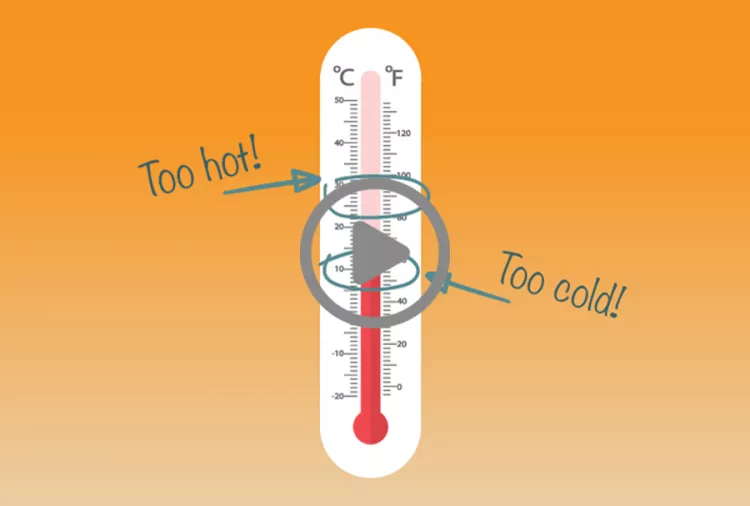The Silent Alarm System of Your Body
You don’t have to be a doctor to know that something’s off when you’re shivering uncontrollably or burning with fever. But beyond discomfort, abnormal body temperature can signal underlying problems that require urgent medical attention.
From low-grade fevers to dangerously high temperatures, your body temperature is one of the most reliable indicators of health.
In this article, we unpack the science behind body temperature, the range of what’s normal, and when a deviation could signal something worrisome.
We’ll also explore common and uncommon causes of temperature dysregulation, symptoms to watch for, and practical tips for when to seek help.
1. What Is Normal Body Temperature?
The average body temperature for a healthy adult is 98.6°F (37°C). However, this number isn’t fixed. It can vary based on time of day, age, physical activity, hormonal changes (especially in women), and the method used to measure it (oral, rectal, armpit, or ear).
The generally accepted range is between 97°F (36.1°C) and 99°F (37.2°C). Anything outside this range should be watched closely.

2. High Body Temperature: When Is It Dangerous?
A fever is the body’s natural response to infection or inflammation. But how high is too high? A low-grade fever ranges from 99.1°F to 100.4°F (37.3°C to 38°C), while a moderate fever falls between 100.4°F to 102.2°F (38°C to 39°C).
A high fever is classified from 102.2°F to 104°F (39°C to 40°C), and anything above 104°F (40°C) is considered very high and dangerous.
Red flags accompanying high temperatures include confusion or delirium, seizures (especially in children), difficulty breathing, chest pain, stiff neck (a sign of meningitis), persistent vomiting or diarrhea, and a rash that doesn’t fade under pressure.
Common causes of high temperature include viral infections (like flu or COVID-19), bacterial infections (such as pneumonia or urinary tract infections), heat exhaustion or heatstroke, autoimmune diseases like lupus, or reactions to medications and vaccines.
Heatstroke is a life-threatening condition where the body temperature exceeds 104°F. It can cause organ failure, brain damage, or death if not treated immediately. Symptoms include dry skin, confusion, rapid pulse, and fainting.
3. Low Body Temperature: The Overlooked Danger
Hypothermia occurs when the body temperature drops below 95°F (35°C). While we often associate it with cold weather, it can happen indoors or in mild environments, especially among infants, the elderly, and those with chronic illnesses. Mild hypothermia, ranging from 95°F to 89.6°F, presents with shivering, cold, pale skin, and slurred speech. Moderate hypothermia, from 89.6°F to 82.4°F, causes confusion, shallow breathing, and a weak pulse.
Severe hypothermia, below 82.4°F, can result in loss of consciousness, coma, and death if untreated. Causes include prolonged exposure to cold, certain medications (like sedatives and narcotics), alcohol consumption, an underactive thyroid, shock, or sepsis. At-risk groups include infants (especially premature babies), elderly individuals, people with chronic illnesses, and outdoor workers.
4. When Children or Babies Have Temperature Swings
Young children and babies can have fluctuating body temperatures that rise or fall quickly. Parents should pay close attention if their infant under 3 months has a fever over 100.4°F, if a fever lasts more than 3 days, or if a fever is accompanied by a rash, stiff neck, or lethargy. Cold hands and feet with a warm torso may indicate sepsis. Febrile seizures, which can occur in children under five due to rapid temperature increases, are usually harmless but should be reported to a doctor.
5. When to Call a Doctor or Go to the ER
Seek emergency medical attention if you or someone else experiences a temperature over 104°F or under 95°F, a persistent fever lasting more than 3 days, an altered mental state, a severe headache, a rash with fever, difficulty breathing, seizures, or chest pain. Don’t ignore a temperature spike or drop if it’s accompanied by other severe symptoms. Time is critical.
6. How to Measure Temperature Accurately
Different methods can yield different results. Oral thermometers are easy and accessible for older children and adults. Rectal thermometers are the most accurate, especially for infants. Ear thermometers are quick but can be inaccurate if not placed correctly, while forehead scanners are good for quick checks but less precise. For accurate measurement, avoid food, drinks, or exercise 15 minutes prior, use digital thermometers for precision, and clean devices between uses.
7. Managing Fever or Hypothermia at Home
For high temperatures, stay hydrated with water or electrolyte-rich fluids, use over-the-counter medications like acetaminophen or ibuprofen, rest in a cool, shaded room, and use lukewarm (not cold) baths or wet cloths on the forehead and wrists.
Avoid ice baths and alcohol rubs. For low temperatures, wrap the person in warm blankets, use heating pads on core areas like armpits, groin, and neck, offer warm drinks (not alcohol), and remove wet clothing. Avoid direct heat or hot water and rubbing extremities, as these can cause additional harm.
8. Chronic Conditions That Affect Body Temperature
Some health conditions make it harder for the body to regulate temperature. Thyroid disorders, especially underactive thyroid, can cause low temperature. Diabetes affects circulation, increasing the risk for hypothermia.
Neurological disorders like Parkinson’s or multiple sclerosis and infections like sepsis can cause fever or a drop in temperature. If you have a chronic illness, monitor temperature fluctuations closely and inform your doctor of persistent changes.
9. Environmental and Lifestyle Triggers
Certain factors unrelated to disease can influence your body temperature. Dehydration can lead to overheating. Caffeine and alcohol affect thermoregulation. Stress and anxiety can mimic feverish sensations. The menstrual cycle can cause a slight temperature rise post-ovulation. Exercise raises body temperature temporarily.
10. The Role of Wearable Technology
Smartwatches and fitness trackers now monitor body temperature trends, alerting users to abnormal readings. While not as precise as clinical thermometers, they provide valuable trend data that can prompt early intervention.
Listen to Your Body’s Thermostat
Body temperature isn’t just a number—it’s a powerful signal of what’s happening inside you. While slight variations are normal, anything persistent, extreme, or paired with other symptoms deserves attention. When in doubt, trust your instincts.
Monitor your symptoms, use a reliable thermometer, and never hesitate to seek professional advice. In a world where early detection can save lives, your body temperature could be the first alert. Whether you’re burning up or feeling chilled to the bone, it’s time to take your temperature seriously.

